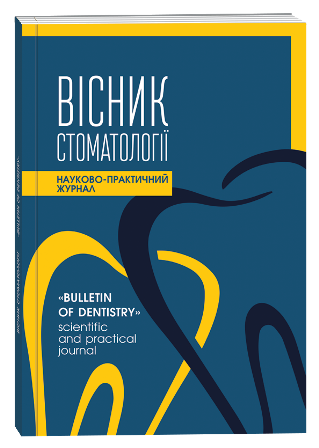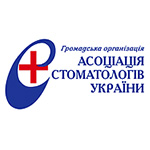DETERMINATION OF THE DENTAL AGE OF UKRAINIAN CHILDREN BY THE DEMIRJIAN METHOD
DOI:
https://doi.org/10.35220/2078-8916-2024-54-4.26Keywords:
Dental age, orthopantomogram, children, teeth, Demirjian methodAbstract
Introduction. Correct assessment of a child's biological age based on dental documentation is very important in various fields of medicine, such as pediatric dentistry and orthodontics, Pediatric endocrinology, orthopedics, and forensic medicine. Dental age, as one of the markers of biological maturity of the child's body, can be determined by examining orthopantomograms, observing the time of eruption and the degree of mineralization of the roots of developing teeth. One of the most common methods for determining dental age using the dental maturity assessment system is the method developed by Demirdjian. Purpose of the study. To estimate the dental age of Ukrainian children by examining orthopantomograms using the Demirdjian method and to compare the chronological and dental age determined by the Demirdjian method in children of Lviv city and Lviv region, aged from 6 to 13 years inclusive. To compare the results obtained with those obtained in similar studies in other countries. Materials and methods of research. A retrospective study of 108 orthopantomograms of boys and girls aged 6–13 years, which were divided by age and gender into four groups for each gender was conducted. The sample was made among somatically healthy children without orthodontic pathology and adentia of permanent teeth, with the exception of third molars. Dental age was determined by assessing the degree of mineralization of the seven left teeth of the lower jaw on the orthopantomogram of the child, converting the obtained data using Demirdjian tables. Results. The dental age determined by the Demirdjian method is higher than the chronological age in all groups of children. The closest results were observed among children aged 6–7 years for both genders. The biggest difference in the obtained data in comparison with the calendar age was found in the age group of 10–11 years among girls and 12–13 years among boys. Similar results of the reassessment of dental age were also observed in the Northern countries of Europe, as well as in Central Poland, Romania, France, Italy, Portugal, Spain, etc. Underestimation, i.e. the lag of the dental age from the calendar, was found in Turkey, the Netherlands, some regions of India, Sudan, etc. Conclusions. The results of this study using the Demirdjian method indicate the need for a more detailed statistical analysis of the obtained values of dental age determined by the Demirdjian method and possible correction of tabular values for different degrees of tooth maturity in separate age groups for both girls and boys.
References
Макєєв В.Ф., Ісакова О.О. Аналіз методів визначення зубного віку дитини, їх достовірність і доступність. Сучасна стоматологія. 2021. № 5. С. 92-98. DOI: 10.33295/1992-576X-2021-5-92
Belsky D.W. et al. Quantifcation of biological aging in young adults. Proc. Natl. Acad. Sci. USA 112. 2015. E4104-4110.doi.org/ 10.1073/pnas.1506264112
Natalie L. Colich, Maya L. Rosen, Eileen S. Williams, and Katie A. McLaughlin. Biological Aging in Childhood and Adolescence Following Experiences of Threat and Deprivation: A Systematic Review and Meta Analysis. Psychol Bull. 2020. № 146(9). Р. 721–764.
Ke D., Lu D., Cai G., Wang X., Zhang J., Suzuki K. Chronological and Skeletal Age in Relation to Physical Fitness Performance in Preschool Children. Front Pediatr. 2021, May 14.№ 9. Р.641353. DOI: 10.3389/ fped.2021.641353.
Грибок Н.М., Проць Р.О. Порівняльний аналіз біологічного віку студентів педагогічного університету. Здоров’я, спорт, реабілітація. 2017. №4. URL: http://doi.org/10.5281/zenodo.1133911.
Грибок Н.М., Іваніків Н.М., Чепелюк А.В. Біологічний вік як інтегральний показник рівня індивідуального здоров’я студента. Науковий часопис НПУ імені М.П. Драгоманова. 2019. № 5К(113). С. 84-89.
Schmeling A., Geserick G., Reisinger W., Olze A. Age estimation. Forensic Sci. Int. 2007. № 165.Р. 178–181.
Rizig A.O., Elamin F., Zeidan Z.A., Kasim K., Mohamed Z. Age Estimation and Dental Maturity for Sudanese Children Using Demirjian’s System. Journal of Medicine and Medical Sciences. 2013. № 4(3). Р.123–127.
Demirjian A., Goldstein H., Tanner J.M. A new system of dental age assessment. Hum. Biol. 1973. № 45. Р. 211–227.
Jurca A., Lazar L., Pacurar M., Bica C., Chibelean M. & Bud E. Dental Age Assessment Using Demirjian’s Method – A Radiographic Study. European Scientific Journal. 2014. №10 (36). Р. 51-60. URL: https:// eujournal.org/index.php/esj/article/view/4886
Cameriere R., Ferrante L., Cingolani M. Age estimation in children by measurement of open apices in teeth. Int J Legal Med. 2006. №120. Р.49-52.
Leurs I.H., Wattel E., Artman I.H., Etty E., Prahl- Andersen B. Dental age in Dutch children. Eur J Orthod. 2005. № 27(3). Р. 309-314.
Azarbakhsh G., Iranparvar P., Tehranchi A., Moshfeghi M. Relationship of Vitamin D Deficiency with Cervical Vertebral Maturation and Dental Age in Adolescents: A Cross-Sectional Study. Int J Dent. 2022:7762873. DOI: 10.1155/2022/7762873.
Abu Alhaija E.S., Owais A., Aljamal G., Nasrawi Y. Dental age estimation of Jordanian children: applicability of Demirjian method. RGO, Rev Gaúch Odontol. 2019.№67:e20190056. URL: http://dx.doi.org/10.1590/1 981-863720190005620180035.









